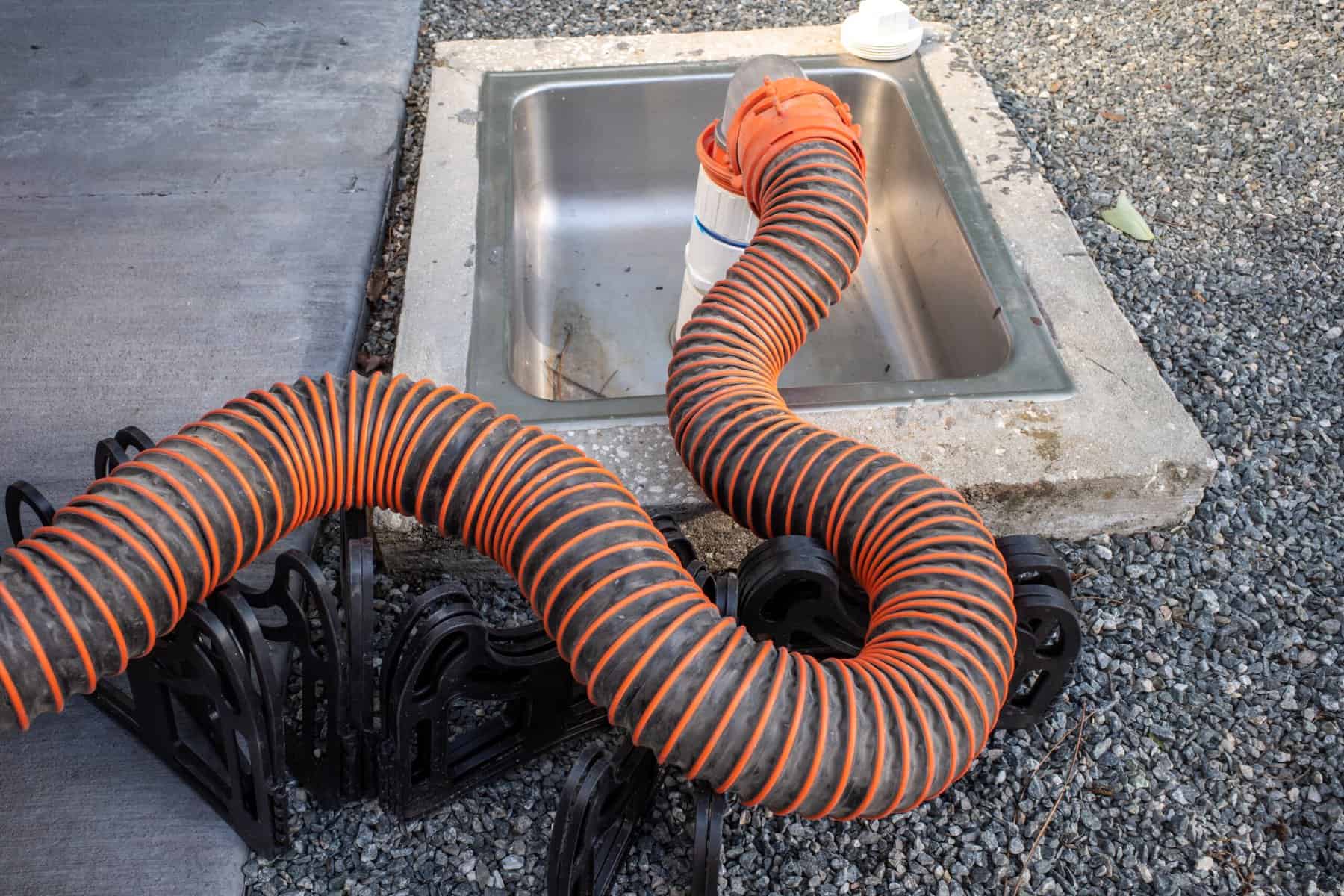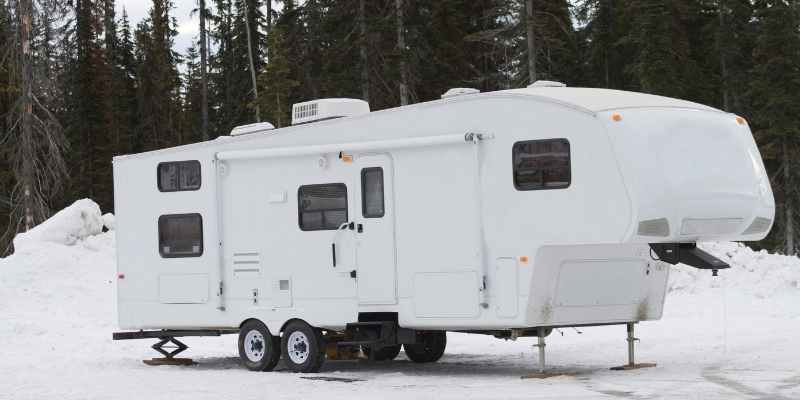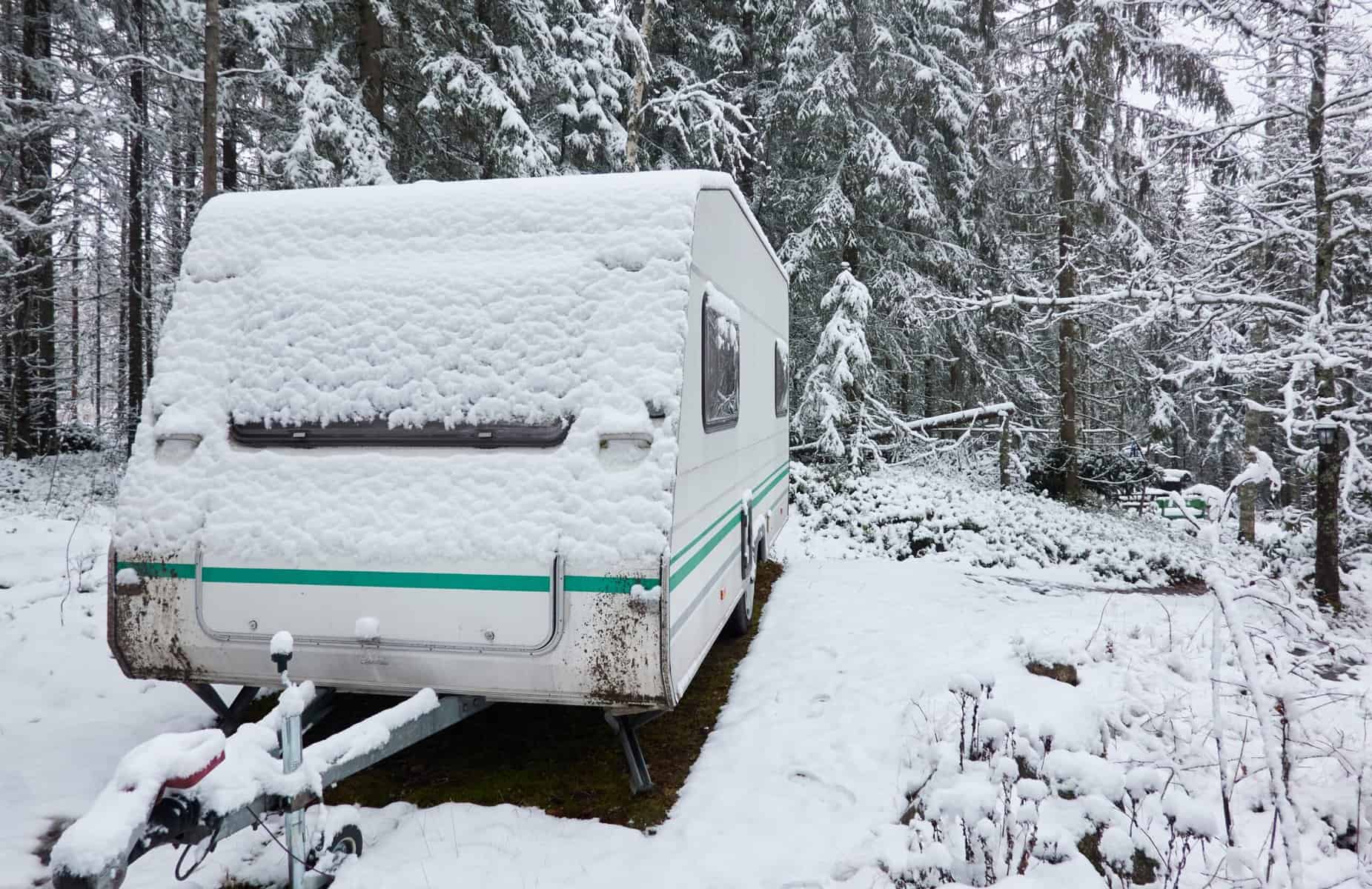It might be hard to believe now, but cold weather will arrive soon. And if you don’t know the facts about RV antifreeze, your camper’s plumbing system could get destroyed when the first hard freeze happens. Here’s how to avoid the RVer’s worst nightmare.
Got Three Minutes? Here’s How to Avoid Frozen RV Plumbing
Most RVers think they understand all there is to know about protecting an RV in freezing winter temperatures. We all know about camper water lines that freeze during a sudden temperature drop. That’s a different story than what we are talking about here.
When it comes to putting an RV in storage for winter, the sheer number of RVers who discover broken water lines after pulling their campers out of winter storage seems to indicate most RVers don’t really understand the RV winterization process. So before your camping season ends, review these tips to winterize your RV. Failing to do it before temperatures drop below freezing will have dire consequences for your RV plumbing.
What happens if I don’t winterize my RV?
Thinking about skipping the RV winterizing process? Wait! Think again!
First, let’s talk about the damage caused by a burst RV water line, frozen fresh water tank, or frozen gray tank. When freezing weather cracks your plumbing, it can result in hard to repair (if not impossible) RV water damage. Your floors can warp, and maybe the walls too. Many RVs go to the junkyard because of water damage from frozen RV plumbing lines.
Frozen water lines can also cause another expensive RV repair bill: cracks in your RV water heater and holding tanks. The time and money to repair these critical RV systems may be more than the value of the RV itself.
Obviously, it’s best to avoid freezing water in your RV’s water system at all times, but especially when it goes into winter storage. That said, if you’ve never winterized an RV before, you might be wondering how to go about it. You’ve come to the right place.
Get the RV Antifreeze FAQs.
Wondering what exactly RV antifreeze is and why it needs to be part of your RV chemicals? Let’s go over everything you need to know about this essential camper winterizing liquid. Afterward, you can dive into your RV winterization project with confidence.
What is RV Antifreeze?
RV antifreeze is almost always pink or reddish in color. Why? Because unlike ethanol-based antifreeze, RVs use a non-toxic, propylene glycol-based antifreeze. It’s technically a double-strength alcohol, usually sold in gallon bottles, and won’t start to freeze until about 16-degrees F. The freezing point of water is 32-degrees F. These factors make it ideal to use when shutting down RVs and cold climate homes for winter. RV antifreeze prevents residual water left in plumbing lines from freezing, expanding, and cracking your RV tanks, water heater, and plumbing lines.
Is RV antifreeze toxic?
Yes and no. RV antifreeze with Propylene Glycol make it safe enough to run through your pipes while your RV or home is shut down. But it must be flushed thoroughly. Consuming RV antifreeze can harm or kill people and pets.
What’s the difference between concentrated and non-concentrated?
The two main types of RV antifreeze are concentrated and non-concentrated. The only real difference between the two types of RV antifreeze is that the concentrated liquid will be a bit darker than the non-concentrated stuff. You need to add water to the concentrate in order to dilute it.
What is the best RV antifreeze brand?
As far as RV antifreeze brands go, we are partial to the Camco brand, as it’s a known and trusted brand in the RV industry. That said, any brand should work just fine, so go with whatever you have easy access to. Again, just make sure it’s RV antifreeze, not the car stuff.
Follow the 7 Steps to Winterize Your Camper with RV Antifreeze
The start and finish of camping season is different for everyone. People RVing with kids will probably end their season much sooner than an empty-nester couple. Whenever you know for sure that you’re done using your RV, it’s time to review your RV winterizing checklist.
Next, get a water pump converter kit. This allows your RV’s water pump to fill the fresh water lines with antifreeze. Once you have that kit, and your RV antifreeze, you can start the winterization process. Relax, it’s not as complicated as you might think.
Here are the seven steps to winterize an RV. Be sure your RV is parked on a level surface.
1. Empty your holding tanks.
Dump and rinse both your graywater and blackwater tanks.
2. Drain your water heater.
Do this by removing the water heater drain plug. Flush the drain while it’s open, by hooking up to city water and turning the water on.
3. Flip your water heater bypass valve.
Find your water heater bypass valve. Most modern RVs have one, and they’re located on the back of the water heater (typically in a low RV kitchen cabinet). Switch it over so the water heater is no longer connected to the plumbing system.
4. Open all faucets.
Open all hot and cold water fixtures. Your RV kitchen, bathroom, indoor and outdoor showers, and even your toilet valve should all be in the open position.
5. Find low point drains and empty your plumbing system.
Open the low point drains, along with your water heater drain, to let all water drain from your RV plumbing system. Turn your water pump on to help remove that water. But turn it off as soon as it stops pushing water out.
6. Prepare to siphon antifreeze into the plumbing system.
Close all drains and faucets. Attach the conversion kit to your water pump, then place the siphoning hose into your jug on RV antifreeze. Turn on the pump.
7. Start filling your plumbing system with RV antifreeze.
Beginning with the faucet closest to the pump, turn each faucet handle on individually. Let it run until you see the pink antifreeze come through. When it does, turn the faucet off before heading to the next. Do the same for the toilet and showers. Pour more antifreeze down all of the RV sinks’ drains, p-traps and into the toilet.
Can I Winterize My RV without RV Antifreeze?
Clearly, RV antifreeze is a very handy thing to have around. Keep some on hand in case extreme cold camping weather decides to come through late or early one year.
That said, there may be times when you need to prepare for a cold front and no antifreeze is available. In this case, it involves using air pressure to winterize an RV without antifreeze. It involves blowing pressurized air through the lines with an air compressor to get rid of all water. You just need to use the correct PSI to get it out completely.
The video below does a terrific job explaining the process of winterizing an RV without antifreeze. Remember, you can certainly do it. But only the RV antifreeze method practically guarantees your RV plumbing will not burst in cold weather. Ask me how I know this to be true.
How Do I Get RV Antifreeze Out of Plumbing?
Of course, you will eventually want to use your RV again. When you do, it’s time to get antifreeze out of your plumbing lines before you can use your camper. Luckily, this is an even easier process that only takes a few minutes.
- To get antifreeze out of your RV’s water lines, make sure the plug is in your water heater. Flip the water heater bypass valve so the water heater is once again connected to the plumbing system.
- Hook up to city water or fill your fresh tank, then turn your pump on.
- Open each faucet handle individually and let the water run until it looks clear. Do this with the toilet and outdoor faucets as well.
Where to Buy RV Antifreeze
Ready to buy RV antifreeze so you can prepare your rig for the coming winter? Thankfully it’s usually pretty easy to find in the fall and winter months. And there’s no antifreeze expiration date. This stuff has an indefinite shelf life!
We like to order from Amazon, and camping stores such as Camping World should have it in stock too. Even Walmart tends to carry RV antifreeze during certain parts of the year. Pick some up when you are grocery shopping and you’ll be well set for the coming winter.
However you get your RV antifreeze, make sure you actually use it before the first freeze. Staying ahead of the extreme cold will let you jump right into more camping adventures next spring, without making any costly plumbing repairs.






